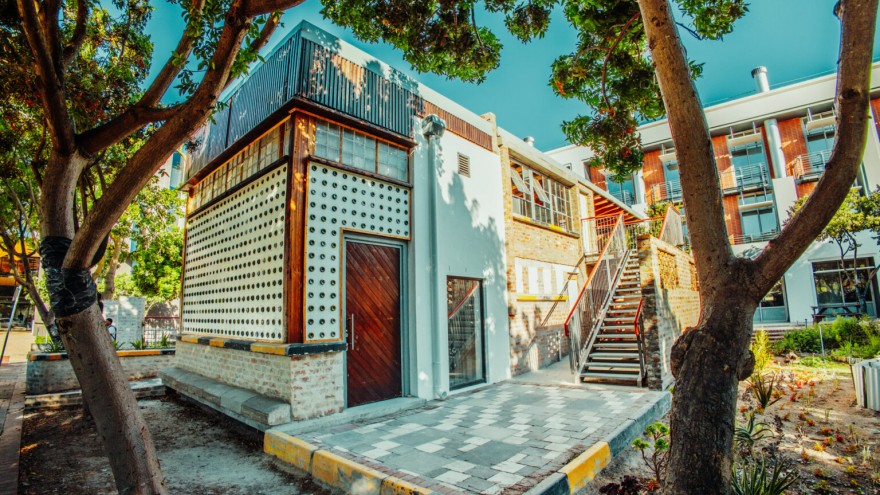The Portswood Café is a new food and beverage space built almost entirely from salvaged and recyclable waste materials from other construction projects at the V&A Waterfront.
In the Portswood District, one of the greenest sections of the Waterfront precinct, the Portswood Café shares space with a food garden which was established in 2020; it currently supports sustainable urban food programmes, such as Ladles of Love and The Homestead which provide meals to those in need. It sits across from The Ridge office building, Cape Town’s newest six-star Green Star Design-awarded commercial building.
The café is 98% constructed from waste gathered from building sites within the V&A precinct – which includes anything and everything from weathered bricks, wine bottles, container doors, fridge doors and steel windows. Water pipes, electrical components, firefighting equipment and detection, regulatory signage and glazing panels are among the new items.
The 90-square metre ground floor space includes a preparation kitchen and deli area as well as indoor restaurant seating. A concession area will provide external seating overlooking the gardens, while a 25-square metre mezzanine level houses an office that overlooks the restaurant below.
Kevin Kimwelle, the architect of the café, was a finalist in the 2017 Design Indaba’s Most Beautiful Object in South Africa Award for his Joe Slovo West community project. The 43-year-old community architect and social innovator thrives on employing a different approach to design that incorporates elements of understanding and empathy, constructively engaging with and managing communities and other important stakeholders.
‘One cannot build in isolation,’ he says. ‘There has to be an investment in communities, particularly in terms of the time spent with them to understand their needs, but also to help them understand the entire process, including the importance of maintenance, as well as limitations and constraints.’
The low-tech, low-energy building is the first of its kind in the popular tourist destination, and the project team believes this demonstration can highlight the role of alternative building methodologies for broader applications, and demonstrate circular economy thinking in practice.
READ MORE







